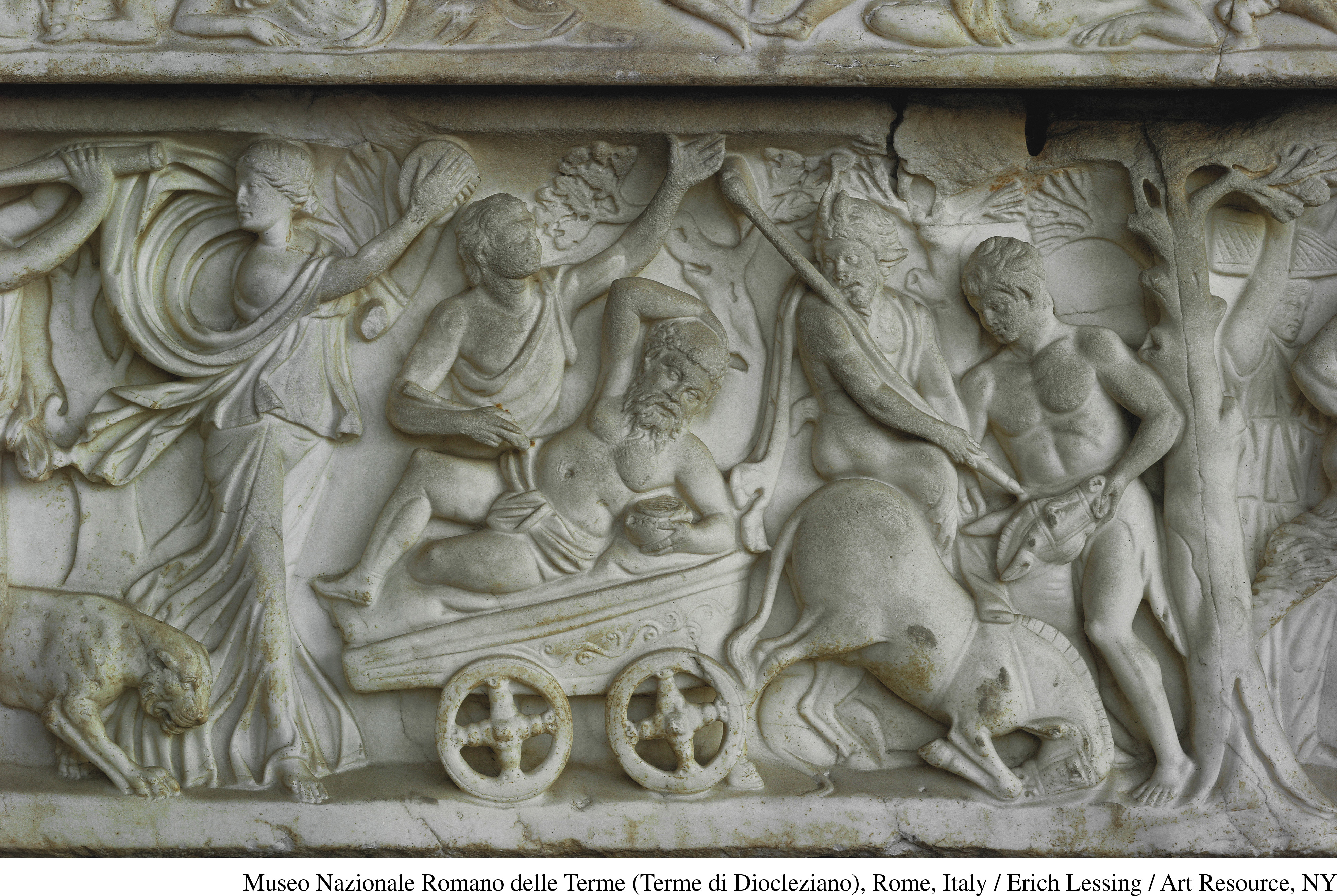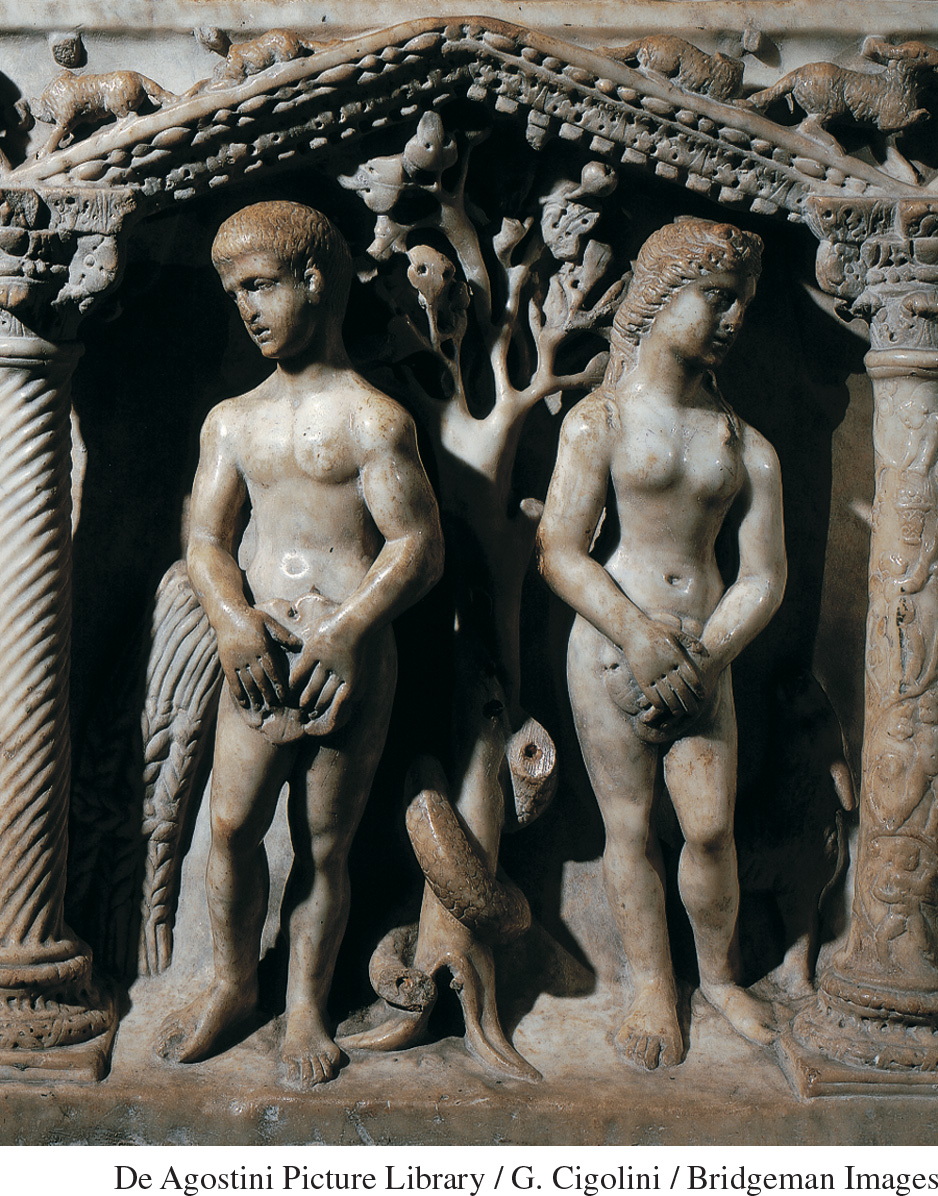Seeing History: Changing Religious Beliefs: Pagan and Christian Sarcophagi
Printed Page 247
Important Events

Christianity became Rome’s state religion in 391 when the emperor Theodosius I banned polytheist sacrifices, but the Christianization of the empire had begun long before. Over time, Christians found ways to testify publicly to their beliefs, often making creative use of methods previously employed to honor Rome’s traditional gods. We can see this process in action by comparing scenes from two sarcophagi (stone coffins), one from the first century and one from the mid-fourth century. These decorated coffins were meant to be seen, not hidden in the ground, to make a statement about their owner’s beliefs.
The top image, from a pagan Roman sarcophagus, shows a religious procession by members of the cult of the god Dionysus. The worship of Dionysus as god of wine and theater was so complex as even to seem contradictory, ranging from violent passion to peaceful rest; it showed both the good that could come from pleasure and the evil that resulted from going too far. Lively processions in his honor, some led by women, were popular. Dionysus is shown here in one of his many different forms: a chubby, lusty, old drunkard, whom the Romans called Bacchus. He reclines on a cart with a jar of wine, pulled by a horse and some kind of half man, half beast, perhaps a centaur. His entourage also includes female musicians, who dance along playing horns and beating tambourines. What other details can you make out? Do they offer hints about the values of the cult of Dionysus?
Compare this scene with the bottom image, a detail from the most spectacular surviving example of an early Christian sarcophagus. This coffin, from 359, held the remains of Junius Bassus, a prominent Roman official. Carved from marble in a classical style, the scenes are all taken from the Bible and center on the story of Christ. The absence of references to polytheistic mythology, which had been standard on earlier Christian sarcophagi, illustrates Christians’ growing confidence in their own religious traditions, which they display in the same way that pagans had previously done. What accounts for the position of Adam’s and Eve’s hands? What do the scenes suggest about the roles of women in pagan and Christian religion?
Question to Consider
What similarities and differences do you see in these two images, and what do they suggest about the religious traditions by which they are inspired?